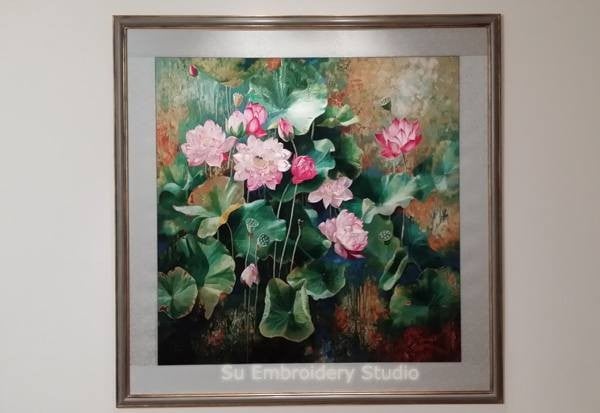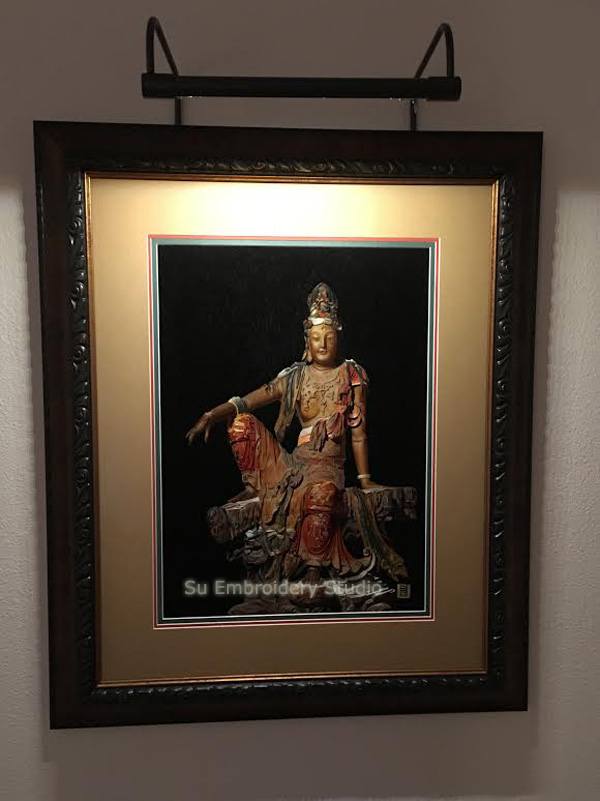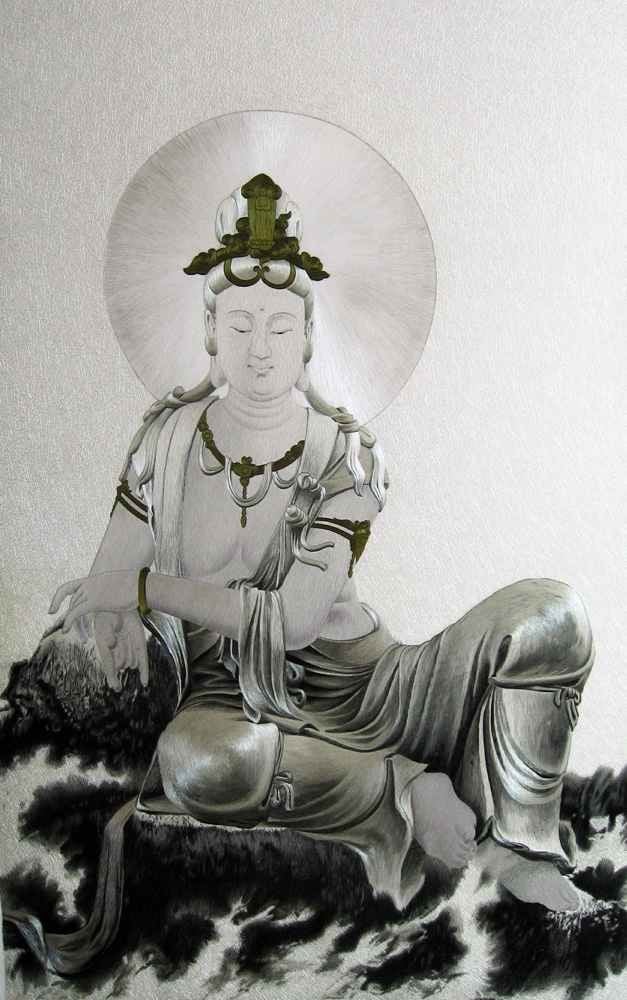
So, you've purchased a beautiful Chinese silk embroidery from us at Su Embroidery Studio, and now you're wondering: How do I keep it looking its best for years to come? We understand that caring for delicate artworks like silk embroidery requires special attention, so we've put together some helpful tips to guide you through the process.
* The photos used in this post are all from our customers who share their silk embroideries with us after framing. You can find more examples of framed silk embroideries at /silk-embroidery-framed#framed-silk-embroideries
Silk Embroidery 'Summer Night' Hand Embroidered with Silk Threads
1. Display with Care
When choosing where to display your Chinese silk embroidery, opt for a location away from direct sunlight, high humidity and moths.
Here are some more detailed measures you can take:
Sunlight
Exposure to direct sunlight can fade the vibrant colors of silk embroidery, reducing its visual appeal and value. To prevent this:
Display Location: Choose a display location for your embroidery away from direct sunlight. Even indirect sunlight, if strong and consistent, can have a fading effect over time. Consider interior walls that don’t receive direct sunlight at any point during the day.
UV Filtering: If your embroidery is framed behind glass, use UV-filtering glass or non-reflective glass (also called museum glass). This type of protective glazing can significantly reduce the harmful effects of UV rays without compromising the visibility of the silk embroidery artwork.
Curtains and Blinds: Utilize curtains or blinds to control the amount of sunlight entering the room, especially during peak sunlight hours. This not only protects your embroidery but also helps in maintaining a cooler room temperature, which is beneficial for silk preservation.
Humidity
Silk fibers are particularly susceptible to damage from high humidity levels, which can lead to mold growth and fiber degradation. To protect your Chinese silk embroidery:
Ideal Humidity: Maintain an indoor humidity level between 40% and 60%. This range is generally safe for silk and helps prevent the growth of mold and mildew. Use a hygrometer to monitor the room's humidity levels if you have a large collection of Masterpiece Chinese silk embroideries.
Dehumidifiers: In naturally humid environments, consider using a dehumidifier to maintain optimal humidity levels. Portable dehumidifiers can be particularly effective in enclosed spaces or during humid seasons.
Avoid Damp Areas: Do not hang or store silk embroidery in areas prone to dampness, such as basements, bathrooms, or near kitchens. These areas often experience fluctuations in humidity and can be detrimental to delicate silk fibers.
Moth Prevention
Regular Inspection: Periodically inspect your silk embroidery for any signs of moth activity. Moths are particularly attracted to stains or areas that might contain human sweat or food residues, so ensure your embroidery is clean before display or storage.
Clean Storage: If you need to store your silk embroidery, ensure it is clean and completely dry. Use acid-free tissue paper to wrap the embroidery gently. This barrier can help deter moths and other pests. Store it in a well-sealed box or airtight container to prevent moths from getting inside.
Lavender Sachets: Use lavender sachets if you find there is sign of moths. Moths dislike the smell of lavender. Hanging lavender sachets near your embroidery or placing them in the storage box can help repel these pests. Lavender offers the added benefit of imparting a pleasant fragrance. Unlike mothballs, which also repel moths but can leave a strong, unpleasant odor, lavender is natural and chemical-free.

Silk Embroidery 'Seated Guanyin' Hand Embroidered with Silk Threads
2. Handle with Clean Hands
Before touching your silk embroidery, always wash your hands to remove any dirt, oils, or lotions that could transfer to the fabric. Handling the embroidery with clean hands helps prevent staining and preserves the integrity of the delicate silk threads.

Silk Embroidery 'The Kiss' Hand Embroidered with Silk Threads
3. Avoid Hanging in High-Traffic Areas
While it's tempting to showcase your silk embroidery in a prominent spot, avoid hanging it in high-traffic areas where it's prone to accidental bumps or snags. Choose a location where it's less likely to be brushed against or touched, minimizing the risk of damage to the delicate silk threads.

Silk Embroidery 'Fox in Snow' Hand Embroidered with Silk Threads
4. Dust Regularly
Though we recommend our customers have their silk embroideries framed with glass, there are still a small part of them who prefer to have their silk embroideries framed without glass.
Dust accumulation on the silk embroidery without glass can dull the colors and texture of the silk threads over time, so it's essential to dust it regularly with silk threads or a soft, clean brush. Be sure to brush in the direction of the stitches to avoid catching or pulling the threads.

Silk Embroidery 'Running Leopard' Hand Embroidered with Silk Threads
5. Store Properly
If you need to store your silk embroidery for an extended period, take care to do so properly. Roll the embroidery loosely around a clean tube or acid-free cardboard core to prevent creasing, and wrap it in acid-free tissue paper to protect it from dust and moisture. Store the wrapped embroidery in a cool, dry place away from direct sunlight and fluctuations in temperature. If the space of your room allows, unfold the silk embroidery and keep it flat with a piece of paper on it.
Silk Embroidery 'Swan Family' Hand Embroidered with Silk Threads
6. Professional Cleaning
For stubborn stains or extensive soiling, consider consulting a professional conservator or textile specialist experienced in cleaning delicate silk embroideries. Avoid attempting to clean the embroidery yourself, as improper cleaning methods can cause irreversible damage to the fabric and threads.
Silk Embroidery 'Lady with Pipa' Hand Embroidered with Silk Threads
7. Enjoy Regularly
Above all, don't forget to enjoy your silk embroidery art regularly! Taking the time to admire and appreciate its beauty not only brings you joy but also ensures that it remains a cherished part of your home for years to come.
We hope these tips help you care for your silk embroidery and keep it looking as beautiful as the day you purchased it. If you have any further questions or concerns, don't hesitate to reach out to us at Su Embroidery Studio.
by Su Embroidery Studio (SES), Suzhou China
SES is dedicated to Chinese Silk Embroidery Art and High-End Custom Embroidery
Find SES's embroidery work at Chinese Silk Embroidery for Sale.













